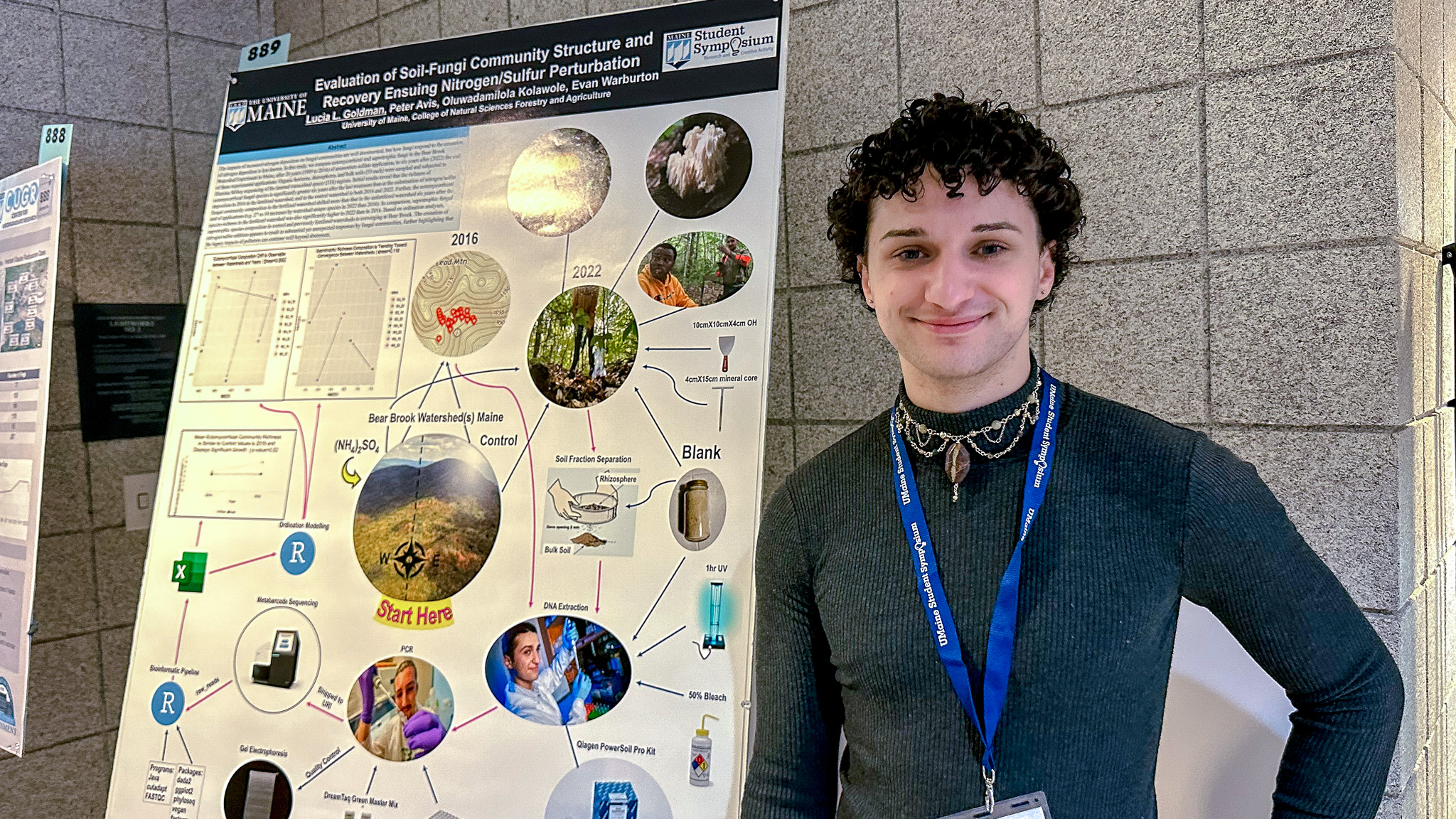
Exploring Fungal Communities and eDNA with Lucia Goldman
By Ilaria Bardini, Writing Intern
Natural ecosystems, including Maine’s plants and forests, are increasingly being impacted by pollution and climate change. Mycorrhizal fungi, fungal communities that have often unseen symbiotic relationships with the roots of plants, are vital to forest communication and their consequent growth and success. The build-up of toxic chemicals and pollutants in soil systems may have devastating impacts on fungal communities and the ecosystems that rely on them. Environmental DNA (eDNA) is an emerging tool for the detection of species, including fungi, that may help scientists understand mycorrhizal relationships and find novel solutions for fungal community recovery for the health of Maine’s ecosystems.
Lucia Goldman, an undergraduate Ecology major at the University of Maine (UMaine) in Orono, is exploring the impacts of a synthetic fertilizer treatment on fungal and plant communities. Under the advisory of Peter Avis, Adjunct Instructor in the School of Biology and Ecology at UMaine and Maine-eDNA Undergraduate Education Coordinator, she is exploring the capabilities of eDNA in mycorrhizal fungal community recovery. Goldman collaborates with two other undergraduate students at UMaine for this project; Evan Warburton, a Biochemistry student, and Oluwadamilola Kolawole, a Biomedical Engineering student.
“The forest is considered a carbon sink and is important in managing climate change.” Goldman explained. “The fungi we are studying is a network that links the forest together like a web.” Through mycorrhizal networks, fungi help exchange nutrients such as carbon based glucose, oxygen, and electrochemical signals for plant communication. “On a global scale, plants and fungi are struggling due to the spilling of nitrogen and sulfur into the atmosphere from agricultural runoff, steel mills, paper mills, and other pollutant contributors.” Goldman emphasized, explaining how deteriorating fungal communities may exacerbate the impacts of climate change.
For almost 30 years, the Bear Brook Watershed in Maine was experimentally polluted by researchers with chemicals high in nitrogen levels. With experimental exposure stopping nearly six years ago, Goldman and the research team are investigating the rebound of fungal community diversity over time. “When you add nitrogen to a system, it has the capability to derail the processes within that system.” Goldman explained. “According to the existing literature, nitrogen perturbation is a result of nitrogen addition.” This can drastically decrease the diversity of species, causing adverse effects on fungal-plant relationships and shifting community composition. Goldman replicated the sampling procedure done by another research team six years ago at the same locations. Once eDNA was extracted from each soil sample, they amplified the Internal Transcribed Spacer (ITS) gene region, a gene present in all fungi species with enough variability to distinguish between species and is referred to as the “fungal barcode”. The research team is still in the early stages of compiling results, but early analysis shows that mycorrhizal fungal communities are not recovering as quickly as expected.
“Without eDNA, this project would be impossible.” Goldman emphasized. “Since so many species are underground, you can’t identify fungi without looking at their genome or physically seeing the mushroom.” The process of analyzing mushroom types without the use of eDNA is tedious and creates an inaccurate representation of the species present. “Without having fellow undergraduate researchers, I would be stuck in the mud.” Goldman said, explaining the importance for scientific collaboration. “One of the most rewarding aspects of conducting this research is knowing that the data we are collecting can be used by others in the scientific community to answer future research questions.”
